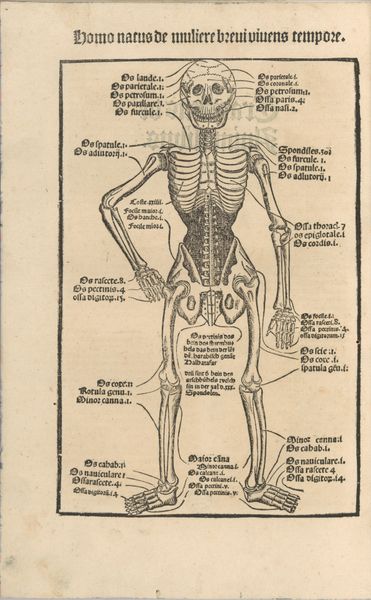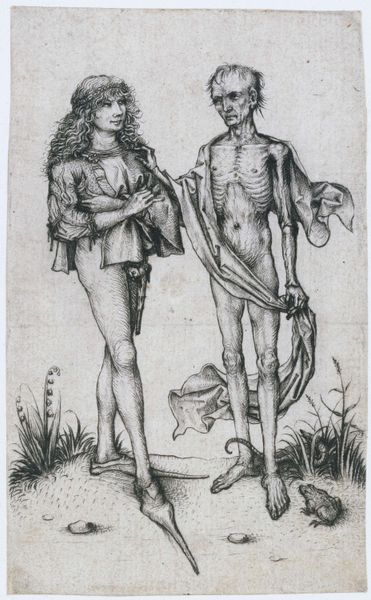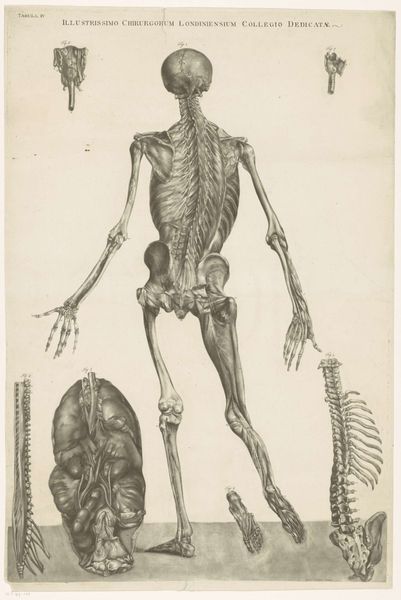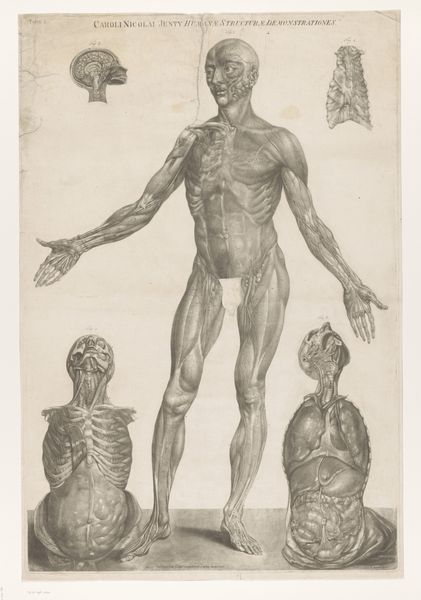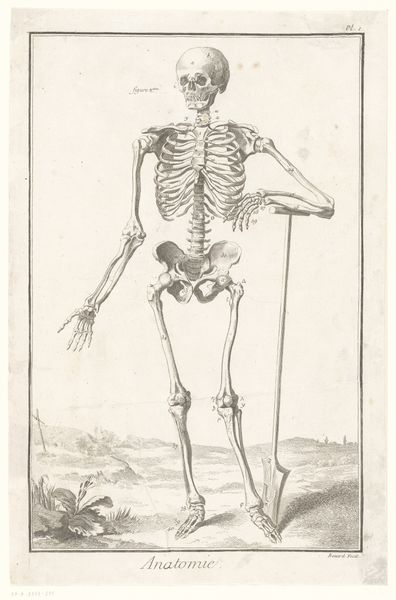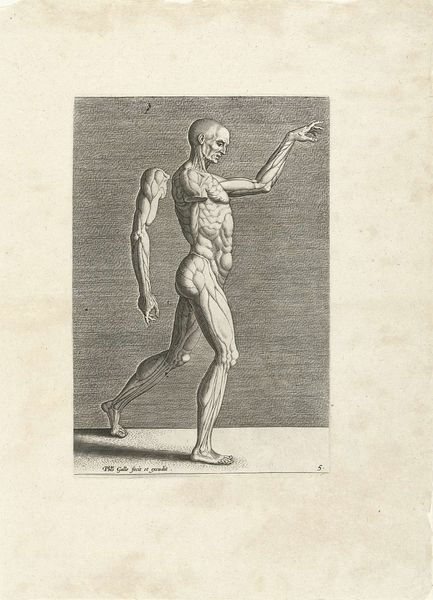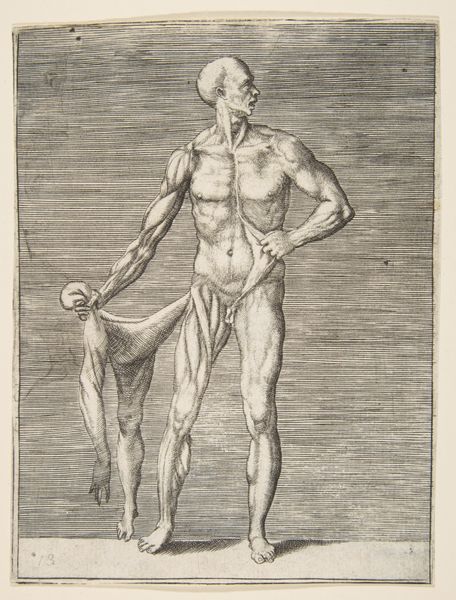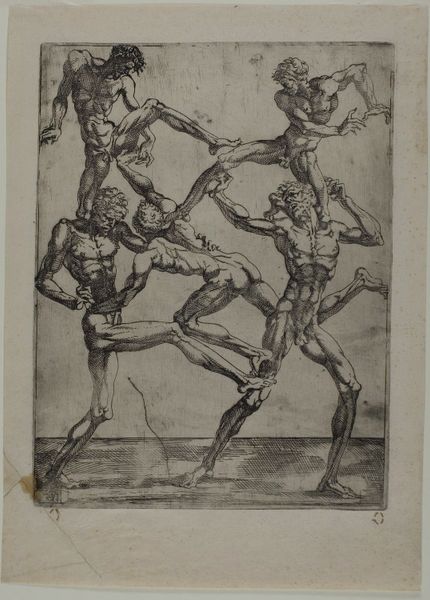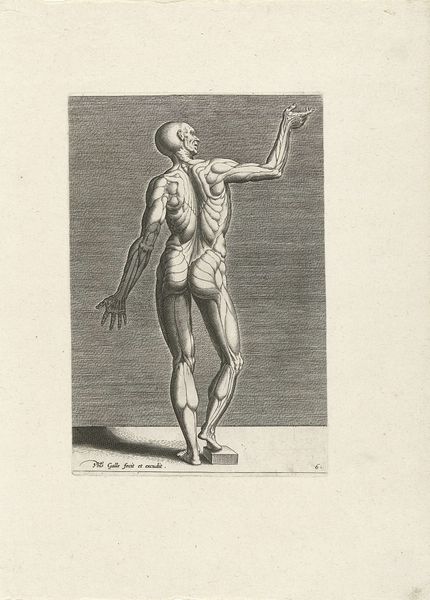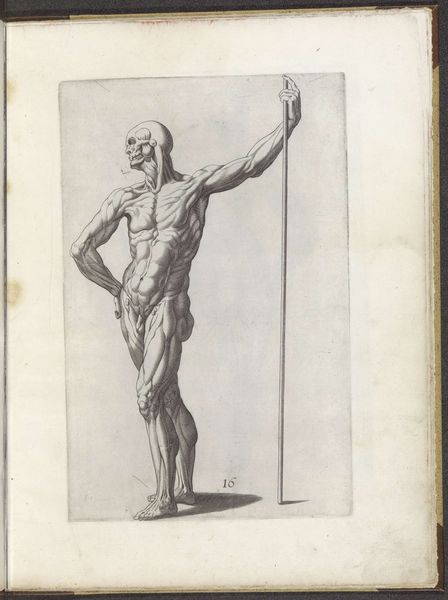
Studies of three skeleton, from the 'Principios para estudiar el Nobilísimo y Real arte de la Pintura' (Madrid 1693) 1688 - 1698
0:00
0:00
drawing, print, engraving
#
portrait
#
drawing
#
allegory
#
baroque
# print
#
figuration
#
vanitas
#
momento-mori
#
history-painting
#
academic-art
#
nude
#
engraving
Dimensions: Sheet: 6 5/16 × 7 7/8 in. (16 × 20 cm)
Copyright: Public Domain
Curator: This engraving, dating between 1688 and 1698, comes from José García Hidalgo’s book 'Principios para estudiar el Nobilíssimo y Real arte de la Pintura'. Titled “Studies of three skeletons,” it reflects the artistic interests of the period, now residing at the Metropolitan Museum of Art. Editor: Whoa, immediate first impression? Memento mori central! A little bit dark, a little bit humorous… and unexpectedly graceful. I’m drawn to that figure in the middle – half flayed, half… presentable? Curator: Indeed, it presents a very clear, Baroque sensibility that is tied to the historical obsession with vanity, allegory and our place in life and, of course, in death. The composition offers a very direct reading of how the ephemeral human beauty of flesh is ultimately destined to bone. We see in Hidalgo’s art here a tension between aesthetic beauty, figuration and our decaying flesh. Editor: You put it so perfectly. I see almost a celebration too? These aren’t scary skeletons; they're posed, almost elegant, doing the "before and after" comparison of time. That middle figure has a calmness, accepting the shared destiny, which transcends just horror and despair to find dignity in our shared vulnerability. Curator: That middle figure does act as something of an objective 'truth', which then enables those outer skeleton figures to become symbolic representations. This reminds me of certain debates at the time surrounding identity, the physical form, and how it impacts our lives. How should it be portrayed in art? Is a beautiful body automatically worthy of the viewer’s gaze if its truth will inevitably be as horrifying and naked as a skeleton? It challenges conventional assumptions in representation by asking if beauty lies beneath the surface in bone structure or in lived reality within flesh, prompting introspection from contemporary viewers, I hope! Editor: And that final, drooping skeleton almost reminds me of those renaissance artistic renditions of sadness and suffering. The scythe also adds this narrative touch to the entire artwork, allowing it to go beyond simple study material to an artwork in and of itself! Looking at art with this specific lens gives such depth and humanity to figures otherwise portrayed with little emotion. A true balancing act in Baroque illustration! Curator: Precisely. Looking at it this way allows us to reflect on both artistic intentions, and where the work stands now, socially and artistically. Editor: Gives a lot to ponder next time I'm face to face with my own mortality! A beautifully complex artwork.
Comments
No comments
Be the first to comment and join the conversation on the ultimate creative platform.
